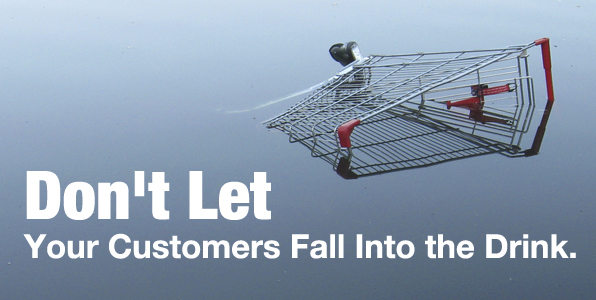
Your entire ecommerce website is built for one thing: to drive customers to conversion. Most critical to that goal is your homepage, which has to instantly tell visitors who you are and what you offer—and convince them to stay, shop and buy.
Check out this great blog on great homepage design. You can build a homepage that’s eye catching and directs your customers where they want to go. Here, we’ll be a little more specific about the top ten homepage elements that keep them moving through your sales funnel to checkout.
1. Brand Identity. Your page should immediately shout who you are and what you offer, so customers know they’ve come to the right place. Your company logo and colors foster trust: customers who recognize and remember you feel more comfortable on your site.
2. Value Proposition. Why are you better than the other guy? What unique value do you offer the customer? Like BMW’s “ultimate driving machine,” your value proposition quickly differentiates you from your competitors and should be featured proudly on your homepage.
3. Calls to Action. Customers are on your site to get something—be it information or goods and services, so make it easy for them. Make your CTAs prominent, clear and decisive. “Buy Now” and “Order Here” and “Sign Up Now.” (Do some A/B testing on the wording of your CTA buttons, to be sure they suit your specific audience.)
4. Navigation. In addition to providing an intuitive map of your site, your navigation tabs work to pull your customer through the sales funnel. Each tab should be a step towards conversion.
5. Search Bar. The search bar should always be in the same place so it’s easy to find: in the upper right corner or right across your banner. If you can, use suggestive search to offer items similar to (or accessories for) whatever’s being searched. Also, use corrective search so if someone looks for a “chase lounge” they’ll still see your selection of “chaise lounges” instead of an error message. Whether it’s a typo or spelling error, help them out.
6. Easy-access Shopping Cart. Your shopping cart should be a fixture on your homepage and all pages, and it should remain intact so your customer doesn’t have to start shopping all over again if she steps off your page momentarily. Nearly a quarter of shoppers will leave their cart to come back later, sometimes on a different device, to make the purchase. (Source)
7. Free Shipping. If you offer it, HIGHLIGHT IT, for crying out loud. The #1 reason for shopping cart abandonment is high shipping fees, so tell customers right up front that it’s free. (They’ll even add items to their order to get free shipping.)
8. Bestsellers. Feature your most popular products—those that showcase your strengths and your sweet spot—and show customers why those products are so hot. Consider highlighting a happy customer to foster trust and keep visitors on your page longer. A quote like, “I don’t go anywhere without my ____” with a picture of a real customer (not a stock image) makes an attractive widget that leads users to a customer testimonial site.
9. Sales and Specials. Everybody loves a bargain, so put it right out there in front. (A recent study by the E-tailing Group found that nearly 50% of shoppers want to buy products only at a discount.) Feature your current deals and specials prominently on the homepage, and add a navigation tab for a sales and specials page. Some shoppers go directly to the sale/clearance rack when visiting a site.
10. Contact Info. Putting your location and phone number on your homepage (most people look for it in the footer) reinforces that you’re a legitimate and trustworthy company. You should also feature social media buttons and trust badges, like TrustE, for the same reason. (Read more about trust metrics.)
A word about speed
In ecommerce, speed kills. Or rather, lack of speed kills sales. You might build the perfect homepage, but if it’s slow to load, nobody will stick around to see it. Google recommends that your page render all of your first-screen content in one second or less for both desktop and mobile. It’s a lofty goal: Only about 18% of the top 100 online retail sites load in three seconds or less, never mind one second. That’s because banners, sliders and other complex elements take time to load, so use them strategically. If they don’t move your customer to the next step in the purchase process, they’re probably not worth it. (For more insight, check out this blog on site speed and SEO.)
Contact Marketing Torque to build a better ecommerce home page.


